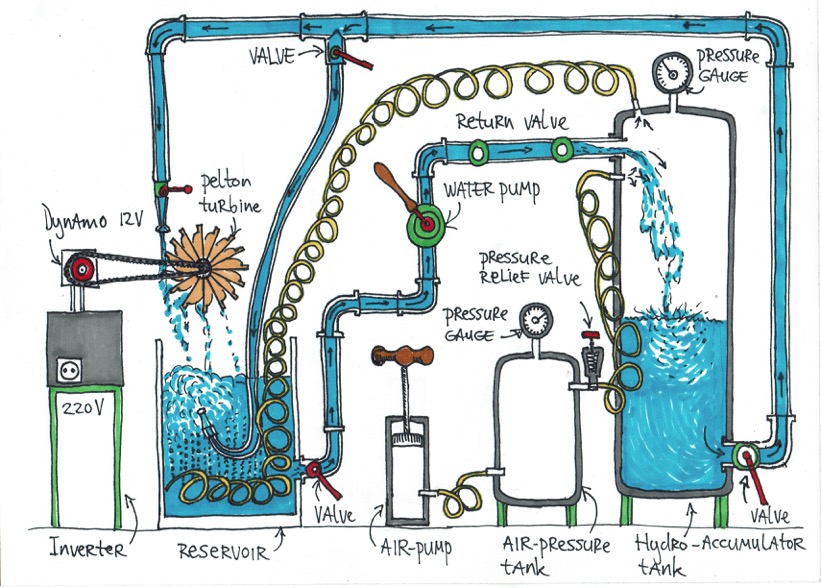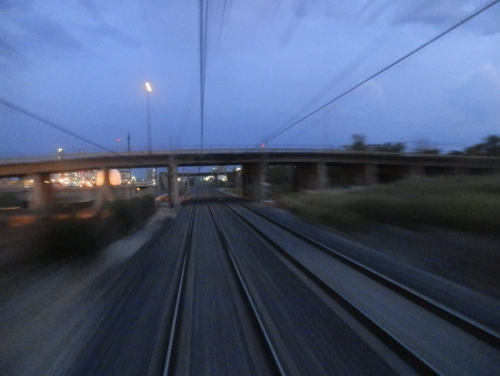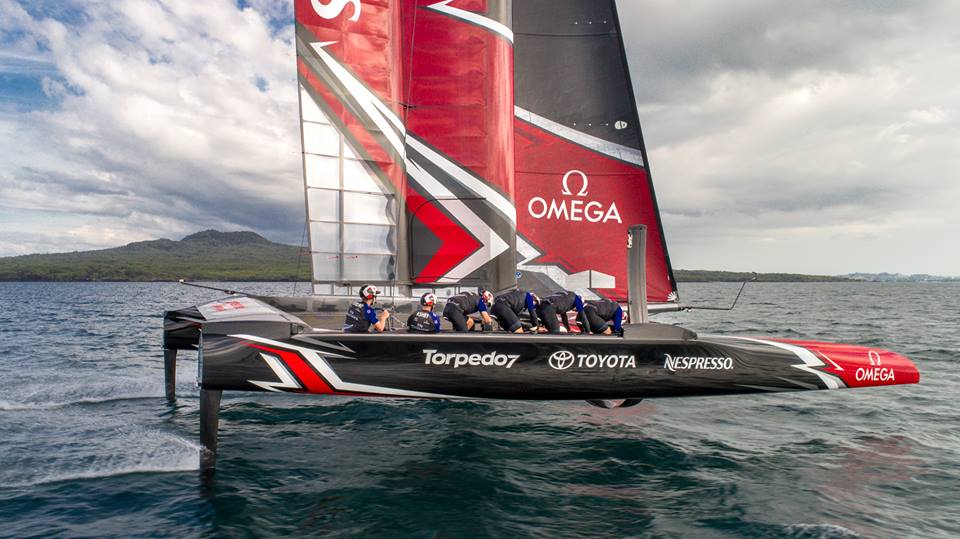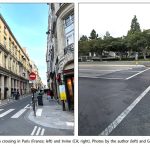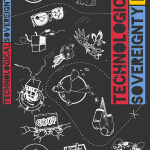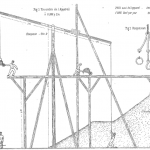The Human Power Plant is a working prototype of a muscular power generator, manned by a group of people. It is an all-round off-the-grid solution, which can supply energy in the form of electricity, water under pressure, and compressed air. It is built from simple and durable parts.
These days, we have automated and motorised even the smallest physical efforts. At the same time, we go to the gym to keep in shape, generating energy that’s wasted. The Human Power Plant restores the connection between physical exercise and energy use.
See and read more: The Hydro-Pneumatic Human Power Plant: How it Works. Drawing: Melle Smets.
